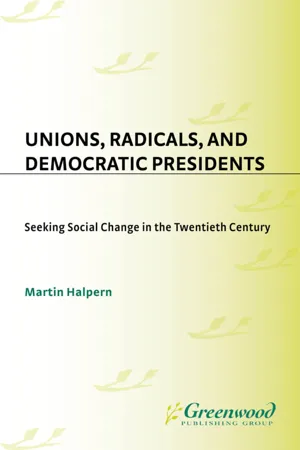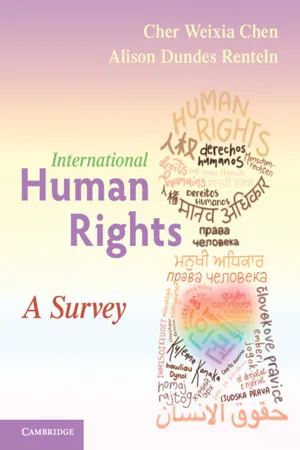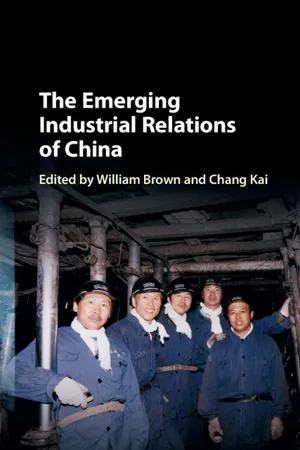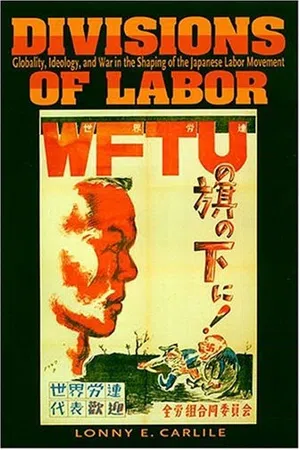Economics
Labor Movement
The labor movement refers to the collective efforts of workers to advocate for better working conditions, fair wages, and improved benefits. It encompasses the formation of labor unions, strikes, and negotiations with employers to address issues such as workplace safety, job security, and equitable treatment. The movement has played a significant role in shaping labor laws and policies.
Written by Perlego with AI-assistance
Related key terms
1 of 5
4 Key excerpts on "Labor Movement"
- eBook - PDF
Unions, Radicals, and Democratic Presidents
Seeking Social Change in the Twentieth Century
- Martin Halpern(Author)
- 2003(Publication Date)
- Praeger(Publisher)
How do we untangle these contradictory realities—a Labor Movement often at the center of the social-change process but both flawed in its inter- nal processes and too often on the sidelines or on the wrong side of public policy issues of concern to social-change advocates? The term Labor Movement implies a social change and activist orientation. Wage earners are seeking change, improvement in their immediate mate- rial situations, a greater say at their work sites, and a polity in which their ideas and needs receive due consideration. The Labor Movement is by nature collectivistic rather than individualistic. Groups of workers who face common problems combine to gain a measure of power for the group and thereby diminish the absolute power of the employer over their work lives. The Labor Movement by definition is a social-change movement. Although the Labor Movement is a social-change movement, it inevitably is less than perfect in embodying within it all the social-change needs of our society. The Labor Movement is a movement of, by, and for workers. Trade unions as democratic and representative institutions reflect the thinking of their members. The thinking of the membership changes his- torically due to demographic changes in the workforce and union mem- bership and ideological debates among workers. Some of these debates are unique to workers, but many more are reflective of ongoing debates on cul- tural, social, and economic issues in our society. To the degree that social change is an effort to seek social justice as well as social power for the pow- erless, ideological conceptions are central to the issues at hand. Trade unionists, like all other members of society, are influenced by the ideologi- cal debates ongoing in our polity on social justice issues. - eBook - PDF
International Human Rights
A Survey
- Cher Weixia Chen, Alison Dundes Renteln(Authors)
- 2022(Publication Date)
- Cambridge University Press(Publisher)
For example, during the Middle Ages, the Peasants’ Revolt in England led to demands for better wages and working conditions. The modern concept of the labor rights movement originated during the Industrial Revolution, which was accompanied by the emer- gence of labor unions. This was an organized effort of workers seeking to improve their status through the united actions of labor unions. Webb and Webb (1920) argue that the origins of labor unions could be traced back to Britain in the eighteenth century with the influx of women, children, rural 1 A prominent strike leader in the Grunwick dispute in London in 1976. workers, and immigrants into the labor market. Despite the conventional wisdom, it is clear that the question of which specific labor rights were salient varied in different countries at different times, depending on the status of their respective Labor Movement. (Regini, 1997). For instance, child labor was the concern for the early labor rights movement in the UK. One of the earliest labor legislations was the 1833 Factory Act, passed by the British Parliament; it stated that children under the age of 9 years could not work, and limited children aged 9–13 to 8 hours of work a day and children aged 14–18 to 12 hours of work a day (see Figure 11.1) (Hutchins & Harrison, 2007). At its inception, the labor rights movement was confined to its national borders. With increasing international trade and the growing importance of multinational corporations, however, there were calls for international cooperation, culminating in the creation of the International Labour Organization (ILO) in 1919 (Valticos, 1969). Since then, the ILO has played a crucial role in establishing international labor standards and promoting labor rights worldwide. It has an excellent record with its technical programs. It was involved in historical events such as decoloni- alism, restoring trade union freedom in Poland, and ending apartheid in South Africa. - eBook - PDF
- William Brown, Chang Kai(Authors)
- 2017(Publication Date)
- Cambridge University Press(Publisher)
The Two Forms of Labour Movement 47 Another motive for diluting the union movement was to prevent the trade union from detaching itself from the Party as an active workers ’ movement, and becoming an opposition force. Following the Party ’ s criticism of the then ACFTU chairman Li Lisan ’ s idea of ‘ union inde-pendence ’ in 1950, and the criticism of the then ACFTU chairman Lai Ruoyu ’ s ‘ syndicalism ’ in 1958, the idea of a ‘ labour movement ’ in China has become a purely historical notion, and only ‘ trade union work ’ exists in reality. In 2003, the union cadres ’ school known as the ‘ China Labour Movement College ’ , sponsored by the ACFTU, of fi cially changed its name to the ‘ China Institute of Industrial Relations ’ . This symbolised the fact that ‘ labour movement ’ as a historical concept had been deliber-ately detached from the ACFTU. During the period of the state-planned economy, Chinese society was under the total control of the government. The workers ’ well-being was seen to be fully addressed by this arrangement. Without the need for the formation of a labour movement, the mass of workers could be seen as simply the nuts and bolts of the state apparatus. Under a market econ-omy, however, the interests of the state, capital and labour have necessa-rily diverged. The concept of a labour movement as a social movement for workers to fi ght for their rights and independence becomes historically unavoidable. As the subordinate party in the employment relationship, workers need solidarity to mobilise the organised power necessary to maintain and fi ght for their own interests. Only by doing so can workers develop a power base that is more comparable with that of capital. The market economy has revived China ’ s labour movement as an issue for debate and it is now emerging as a social movement. Rapid economic development had initially encouraged the view that the most important condition for competitiveness was low labour costs. - eBook - PDF
Divisions of Labor
Globality, Ideology, and War in the Shaping of the Japanese Labor Movement
- Lonny E. Carlile(Author)
- 2005(Publication Date)
- University of Hawaii Press(Publisher)
Historically, the most widespread of these in the European context was that promoted by the Catholic Church. Third, certain ambiguities in Marxism itself encouraged internal differentiation and division within the move-ments based on its tenets. Because of the centrality of these ambiguities to an understanding of the dynamics of twentieth-century Labor Movements, it is help-ful to review them in some detail. One source of internal tension in Marxian-socialist thought grew out of differing positions on the question of whether the Labor Movement should be “reformist” or “revolutionary” in character—that is, focused on working toward beneficial changes within the confines of the existing regime or oriented toward overthrowing and replacing wholesale the existing socioeconomic and political order. The sociopolitical context of early twentieth-century Europe provided jus-tifications for both positions. On the one hand, the very fact that trade unions and 8 • Labor Movements in Europe working-class political parties had, despite resistance and obstacles, gained foot-holds in the politics and economies of some of the countries where industrializa-tion was most advanced lent credence to assertions concerning the possibility of incremental advances toward socialism within existing democratic capitalist orders. On the other hand, there were still formidable institutional barriers in all countries that blocked the attainment of working-class interests as well as ruling elites who were willing to engage in drastic measures to prevent Labor Movement advances. This line of thought led to the conclusion that the appropriate strategy for the Labor Movement was either to wait for the emergence of or to precipitate those conditions that would lead to the collapse of the existing political economic order. Reforms, in this view, would only lengthen the life span of capitalism.
Index pages curate the most relevant extracts from our library of academic textbooks. They’ve been created using an in-house natural language model (NLM), each adding context and meaning to key research topics.



